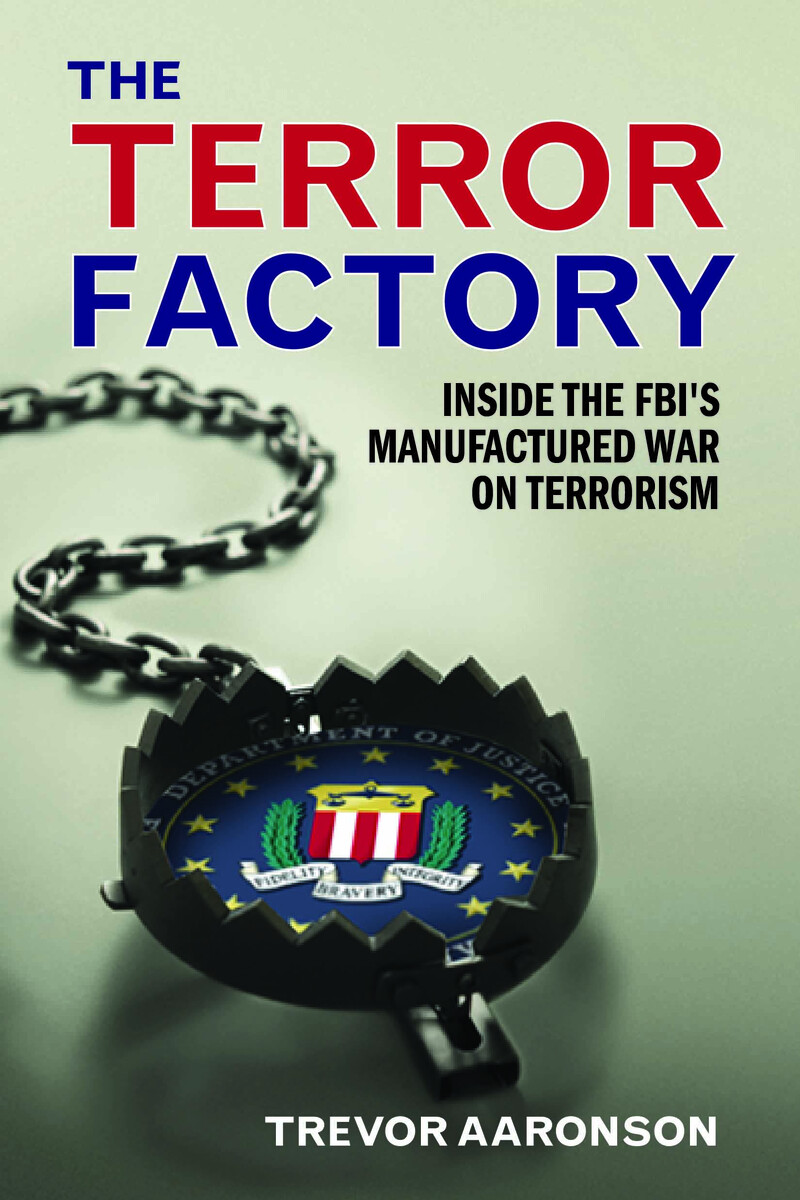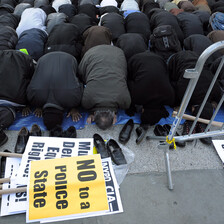The Electronic Intifada San Francisco 20 March 2013

Robert Mueller, director of the Federal Bureau of Investigations since one week before the 11 September 2001 attacks, recently wrote a letter to the Senate Appropriations Committee bemoaning the “across-the-board cuts” imposed on the agency while outlining the areas of law enforcement that will suffer as a result. Among the areas in which the FBI and Department of Justice would be forced to downsize their activities would be the financial sector. “Left unchecked, fraud and malfeasance in the financial, securities and related industries could hurt the integrity of US markets,” Mueller warned.
In light of the reality of US economic woes, Mueller’s admonition is disingenuous, if not downright pernicious. In fact, the FBI’s 12-year absence from monitoring financial fraud saw the nation’s biggest economic meltdown — itself a direct result of the financial sector running roughshod over what few regulations remained. And now, more than four years after that manmade collapse, the Department of Justice has yet to investigate, let alone prosecute, the criminals responsible for the devastation.
What the FBI was doing before, during and after the financial crisis is the subject under examination in Trevor Aaronson’s new book The Terror Factory: Inside the FBI’s Manufactured War on Terrorism.
The book unveils the FBI’s domestic counterterrorism program that began after the 11 September attacks and has continued well into Barack Obama’s second term in office. The program, vividly portrayed by Aaronson, is defined by a wanton use of informants and sting operations in order to produce a high rate of convictions — thus ensuring that Congress continues to write out checks to the FBI’s counterterrorism program to the tune of $3 billion annually.
Since the 11 September attacks, the FBI has employed more than 15,000 confidential informants nationwide. And, according to Aaronson, for each official informant there are as many as three unofficial informants — known within the FBI as “hip pockets.” By 2011, the Justice Department had prosecuted more than 500 individuals on terrorist charges, a handful of whom Aaronson categorizes as “actual terrorists.” The rest were hatched within the context of FBI sting operations, informants and agents provocateur.
Until 2009, the specifics of the Department of Justice’s terrorist cases were classified. But when Attorney General Eric Holder decided to prosecute Khalid Sheikh Mohammed in a Manhattan courtroom, he was called upon to prove how capable US courts were of convicting terrorists. In order to do so Holder made public the document containing the track record of the DOJ’s prosecution of terrorists. With that information divulged, Aaronson — already watching “terrorist” convictions with a fair amount of skepticism — grabbed the opportunity to investigate who these alleged terrorists really were.
Sordid practice
What Aaronson discovered was that, far from preventing terrorism, the FBI uses its funds to “manufacture” terrorists out of marginalized, desperate, mentally ill or immature men (many of the convicted individuals profiled are in their early twenties). In Aaronson’s words, “The FBI has been effective at creating the very enemy it is hunting.”
Taking his readers through several FBI sting operations, Aaronson reveals a sordid practice in which the FBI often employs criminals to infiltrate Muslim communities to turn otherwise powerless malcontents into “terrorists.” According to Aaronson’s accounts, these so-called terrorists would have no more than the capability to mouth off in a chat room if it weren’t for the inert weapons and cash that informants would literally place in their hapless hands, thus creating “bogeymen from buffoons.”
The Terror Factory adroitly covers the context in which the informant program emerged, including interviews with several current and former members of the FBI. Aaronson portrays a feeble pre-11 September FBI, comprised of Luddite lawyers and technocrats whose negligence appears in no small part responsible for the 2001 attacks, transformed by an influx of cash and a new set of instructions.
Coercion
In addition to providing intimate and harrowing portraits of individuals framed as terrorists by the FBI, Aaronson also elucidates precisely how the agency similarly creates informants. Whether by leveraging an individual’s criminal history, exploiting a precarious immigration status or manipulating the expansive no-fly list, the FBI frightens and coerces vulnerable people into acting as spies for the agency.
Aaronson confines his critique of the “war on terror” to the FBI’s use of informants and sting operations. The narrow parameters of his book allow Aaronson to effectively drive home the important point that the proliferation of informants among Muslim-Americans has not only fragmented communities and devastated lives, but is entirely ineffectual at preventing terrorism.
However, this limited scope proves perilous when Aaronson attempts to navigate around the distinction he makes between a “real terrorist” and a manufactured one, hampering his ability to fully critique the FBI’s counterterrorism program and the war on terror. This problematic tension is felt at various points throughout the book, but is starkly revealed when Aaronson describes the list Holder declassified in 2009: “While the list did include one dangerous terrorist, Najibullah Zazi, as well as people who were raising money for or sending money to terrorist groups such as Hamas, the Tamil Tigers in Sri Lanka, and the Revolutionary Armed Forces of Colombia, others who made the list were terrorists only because the Justice Department had labeled them as such.”
Dubious apology
It seems implausible that Aaronson is unaware of the cases of the Holy Land Five, Muhammad Salah, Sami Al-Arian and countless others — all of them also manufactured “terrorists” whose lives were destroyed by allegations of providing “material support” to Palestinian groups categorized as terrorist organizations in 1997 — but the above suggests he is. While this flaw does not negate the value of Aaronson’s significant investigation, it indicates a troubling and, given his insight, rather surprising short-sightedness. In not questioning the US definition of terrorist organizations, Aaronson fails to account for the political motivations that lead to these designations.
Furthermore, he offers a dubious apology for the dangerous notion that the world can and should be divided into good Muslims and bad Muslims — not only real terrorists and manufactured terrorists. Aaronson cites, without irony, a 2011 study that finds most Muslims in the US want to “adopt American customs and ways of life” and “reject religious extremism” in order to argue that Muslim values are “identical to that of the general US population.”
That an individual identifies with the impossibly vague and faintly racist notion of “the general US population” is, of course, irrelevant to his or her entitlement to civil liberties and freedom from FBI coercion, spying and entrapment — and Aaronson does his readers no service in failing to remind them of this.
In fact, the “terror industry” has multiple fronts — around the world, in Guantanamo and within the US. All have been facilitated by the ease with which the federal government can label groups, defendants and individuals as “terrorists.” Aaronson’s book does much to reveal the meaninglessness of this label as far as it has been applied in certain contexts. However, he does not extend this logic to the broader war on terror — a war that equips the US government with the authority to not only entrap, but also torture, indefinitely detain and ultimately execute people everywhere.
Aaronson’s book is a powerful portrait of the FBI’s insidious and destructive counterterrorism program that enables the contortion of the innocuous into the threatening, ruining hundreds of lives in its wake. As we view the devastation that lies on the battleground of the war on terror and observe the White House now skirting admission that it may execute citizens on US soil, it is imperative that we address the depths of this deadly sham.
Charlotte Silver is a journalist based in occupied Palestine and San Francisco. Follow her on Twitter: @CharESilver.





